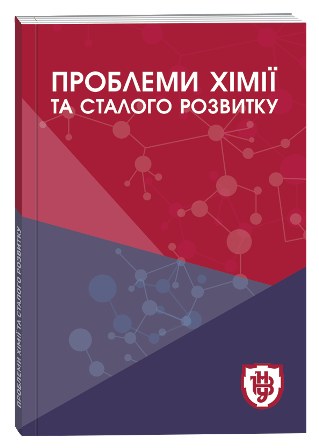SYNTHESIS AND EVALUATION OF ANTIMICROBIAL AND ANTIOXIDANT ACTIVITY OF [(2-(CYANOMETHYL)-1,3-THIAZOL-4-YL)METHYL](TRIPHENYL) PHOSPHANIUM BROMIDE
DOI:
https://doi.org/10.32782/pcsd-2024-1-1Keywords:
1,3-thiazole, triphenylphosphonium, antibacterial activity, antifungal activity, antioxidant activity, bioscreeningAbstract
Triphenylphosphine-based mitochondrial-targeted compounds are widely used to obtain drugs with antitumor, antifungal, antiparasitic, and antioxidant properties. Strategies involving the production of biologically active compounds by coupling lipophilic triphenylphosphine cationic fragment with a biologically active molecular platforms have been widely explored for mitochondrial targeting. That is why we synthesized [(2-(cyanomethyl)-1,3-thiazol-4-yl)methyl] (triphenyl)phosphonium bromide and evaluated its antibacterial, antifungal and antioxidant effects. The obtained results of the bioscreening showed that [(2-(cyanomethyl)-1,3-thiazol-4-yl)methyl](triphenyl) phosphonium bromide exhibits moderate to high antibacterial activity (minimum inhibitory concentration (MIC) was 7.81-250 μg/ml), moderate antifungal effect (MIC was 62.5-125 μg/ml) and high antioxidant activity, the level of inhibition of DPPH radicals is 91.4%.
References
Ibrahim M.K., Haria A., Mehta N.V., Degani M.S. Antimicrobial potential of quaternary phosphonium salt compounds: a review. Future Med. Chem. 2023. 15(22). P. 2113–2141.
Zielonka J., Joseph J., Sikora A., Hardy M., Ouari O., Vasquez-Vivar J., Cheng G., Lopez M., Kalyanaraman B. Mitochondria-targeted triphenylphosphonium-based compounds: syntheses, mechanisms of action, and therapeutic and diagnostic applications. Chem. Rev. 2017. 117(15). P. 10043–10120.
Cheng X., Feng D., Lv J., Cui X., Wang Y., Wang Q., Zhang L. Application prospects of triphenylphosphine-based mitochondria-targeted cancer therapy. Cancers. 2023. 15(3). P. 666.
Wang J., Li J., Xiao Y., Fu B., Qin Z. Triphenylphosphonium (TPP)-based antioxidants: a new perspective on antioxidant design. ChemMedChem. 2020. 15(5). P. 404–410.
Mohanty P., Behera S., Behura R., Shubhadarshinee L., Mohapatra P., Barick A.K., Jali B.R. Antibacterial activity of thiazole and its derivatives: A review. Biointerface Res. Appl. Chem. 2022. 12(2). P. 2171–2195.
Heller A., Brockhoff G., Goepferich A. Targeting drugs to mitochondria. Eur. J. Pharm. Biopharm. 2012. 82(1). Р. 1–18.
Oyewole A. O., Birch-Machin M. A. Mitochondria-targeted antioxidants. FASEB J. 2015. 29(12). Р. 4766–4771.
Lu P., Bruno B.J., Rabenau M., Lim C.S. Delivery of drugs and macromolecules to the mitochondria for cancer therapy. J. Controlled Release 2016. 240. Р. 38–51.
Xu W., Zeng Z., Jiang J.H., Chang Y.T., Yuan L. Discerning the chemistry in individual organelles with smallmolecule fluorescent probes. Angew. Chem., Int. Ed. 2016. 55. Р. 13658–13699.
Danyliuk I., Kovalenko N., Tolmachova V., Kovtun O., Saliyeva L., Slyvka N., Holota S., Kutrov G., Tsapko M., Vovk M. Synthesis and antioxidant activity evaluation of some new 4-thiomethyl functionalized 1,3-thiazoles. Curr. Chem. Lett. 2023. 12(4). P. 667–676.
Janowska S., Andrzejczuk S., Gawryś P., Wujec M. Synthesis and Antimicrobial Activity of New Mannich Bases with Piperazine Moiety. Molecules. 2023. 28(14). P. 5562–14776.
Nazarchuk O. A. Antiseptics: modern strategy of struggle with causing agents of the іnfection complications. Klin Khir. 2016. 9. P. 59–61.
Crowley P.D., Gallagher H.C. Clotrimazole as a pharmaceutical: past, present and future. J. Appl. Microbiol. 2014. 117(3). P. 611–617.
Brand-Williams W., Cuvelier M.E., Berset C. Use of a free radical method to evaluate antioxidant activity. LWT – Food Science and Technology. 1995. 28(1). Р. 25–30.







